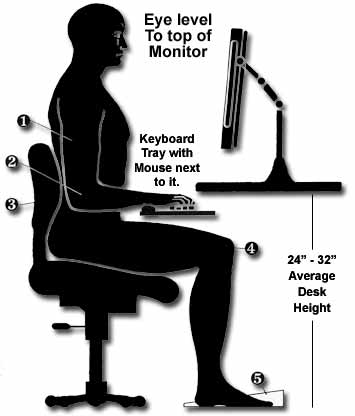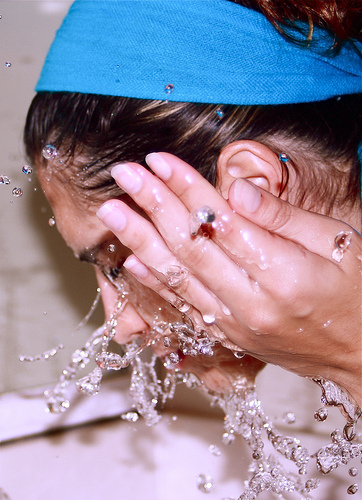
There’s a saying that goes, “eyes are the windows to the soul,” but what happens when your soul windows are in need of repair? The ability to see without discomfort is something many of us can’t imagine living without, yet can take for granted more often than not.
Like with almost everything, you don’t know how important something is until it’s not there or is impeded in some way. Even when you get an eyelash stuck in your eye, you realize how much your eyes do for you in a painless and efficient way.
Although you can live a very fulfilling life with diminished or no sight, if we can prevent vision loss, damage, or irritation to our eyes, why wouldn’t we do so? Maybe you are already suffering from an eye condition and don’t know where to turn.
It can be hard to tell when your symptoms are a natural — but inconvenient — part of living or something of concern you should see an optometrist about. In either case, here are 10 common eye problems to help you see your eye health more clearly.
1. Cataracts
Cloudy days may not get your vision down, but cloudy eyes can. Cataracts are when a cloudy substance forms in the lens of your eyes. This makes it hard for light to get through to your retina, diminishing your vision and adding glare or halos around lights when it’s dark.
This condition is generally found in older people and develops slowly, with usually no other symptoms associated with it to notify you if it’s onset. Other less common causes of cataracts are other eye diseases and injuries, genetics, certain medications, and diabetes.
You may not be able to prevent this condition from ever happening, but living a healthy lifestyle can slow its progression. Once you do have cataracts that impair your eyesight, then the replacement of your lens with an artificial one through surgery will be your best option to restore your vision.
2. Glaucoma
Glaucoma is a group of diseases that increases the amount of pressure in your eye. The eye contains a fluid called aqueous humor that needs to be kept at a consistent pressure level.
When a certain amount of pressure is reached due to an excess of fluid, your optic nerve can be negatively impacted. The function of the optic nerve is to deliver what the eyes see to the brain for processing, so its impairment can lead to vision loss and blindness at its most severe.
Most do not experience symptoms during the early stages of glaucoma, so when they do — like experiencing blind spots in your peripheral vision — a great deal of damage has already been done. Visiting an optometrist regularly is key to getting diagnosed before anything too serious happens, with treatment involving surgery or prescription eye drops.
3. Conjunctivitis
If you wake up one morning and find you can’t open your eyes, you probably have conjunctivitis. Conjunctivitis, better known as pink eye, happens when the sclera and the back of your eyelids become inflamed. This inflammation can make your eyes redden, burn, tear up, itch, and cause discharge.
You can contract this eye problem in a variety of ways, such as from allergies, catching it from someone else, and exposure to certain substances. No matter how you got conjunctivitis, it’s a good idea to get checked out by a doctor anyways since this condition can also be a symptom of influenza, an STD, or Zika virus.
The best way to prevent conjunctivitis is to wash your hands often and keep them away from your eyes. If you do end up developing it, there are eye drops your doctor can prescribe you to treat this condition.
4. Age-related Macular Degeneration
The ability to read or drive is due to the center of the retina called the macula. As we get older, our macula can start to deteriorate — a condition known as age-related macular degeneration (AMD) — gradually taking our sight with it.
AMD typically affects elderly individuals and comes in two different stages: dry AMD and wet AMD. Dry AMD develops when the macula begins to thin with age. It’s known to progress slowly and affect vision less than wet AMD.
That being said, wet AMD is more aggressive and can wipe out your central vision if not seen to. This eye problem occurs when abnormal blood vessels form under the retina, eventually leaking havoc-wreaking fluids.
Although how old you are, family history, and having light skin and hair are all risk factors for this condition, there are lifestyle choices you can implement to lower your risk as well. By eating a healthier diet, keeping a healthy weight, wearing protective eyewear when outside, and abstaining from cigarettes, you can lower your chances of developing AMD significantly.
Symptoms of both types of AMD are blurry eyesight, distorted vision, light sensitivity, and shadows in your central vision. Although there’s not much you can do for dry AMD, there are medications and surgeries that treat the more severe wet AMD.
5. Amblyopia
Amblyopia — more commonly known as lazy eye — is when the vision in one eye is weaker than the other. This usually occurs during the ages of zero to six when one of your eyes is prevented from seeing images clearly, disconnecting your brain from that specific eye.
Amblyopia only affects a single eye and causes the weaker one to roam despite the stronger eye remaining still. If found in young children and treated as early as possible, long-term vision issues can be remedied by the use of an eyepatch or corrective glasses or contact lenses. Surgery is also an option if the other two treatments are deemed insufficient.
6. Diabetic Retinopathy
If you’re diabetic, you can be at risk for this eye health problem. Diabetic retinopathy is when blood sugar levels become so high that the blood vessels in the retina become damaged. At first, fluid leakage from the retina’s blood vessels will occur, which will later develop into the growth of irregular vessels as time goes on.
This encourages swelling and the development of scar tissue, possibly causing the detachment of the retina. If the retina detaches, serious, untreatable vision loss ensues. Warning signs of this condition include dark spots in your vision and blurriness, eventually leading to blindness if left untreated. To not fall victim to this disease, stay on top of eye exams and get your eyes dilated each visit as well.
7. Dry Eye
Although dry eye only hinders vision in severe cases, the discomfort associated with this eye problem is still not preferable. Dry eye occurs when your eyes cannot produce enough tears, either because of issues with your eyelids or tear ducts, medication, or other external factors.
When your eyes are too dry, this can cause a burning sensation or the feeling of something in your eye when nothing’s there. Fortunately, there are a variety of ways to alleviate the discomfort of dry eye. One way is by using a humidifier in your home or the application of artificial tears when your eyes are irritated.
Even taking an omega-3 and fish oil supplement is known to treat this eye problem. If you experience dry eye on a regular basis, you may have a chronic form of it and could get a doctor to prescribe you stronger eye drops if the remedies mentioned above do not make a difference to your eye health.
8. Uveitis
When the middle layer of your eye — called the uvea — becomes inflamed, you may have contracted a strain of uveitis. Although many uveitis cases seem to develop without cause, this condition does induce many eye issues, many of which are on this list.
More concrete causes of uveitis include injury or surgery to the eye or effects from inflammatory or autoimmune disorders. Since the uvea contains the most blood vessels, your eye can become quite red and experience blurriness, pain, and a sensitivity to light as well.
It’s possible your vision will be dramatically impaired, so if you dealt with the before-mentioned symptoms for more than a few days, it’s time to consult a professional. If you do have uveitis, treatment will vary depending on which specific strain you have, but some common remedies are medicated eye drops, medication, and surgery.
9. Retinal Detachment
Retinal detachment may sound like a painful ordeal to go through, but you actually don’t feel a thing. However, when the nerve tissues and blood supply become detached from your retina, you will notice a difference in your eyesight. Your retina is attached to many things in your eye, including a gel known as vitreous.
The vitreous may become smaller as we get older, and if it remains attached to our retina, it can pull the retina as the gel diminishes in size. This pulling can cause you to see flashes — a warning sign that a retinal detachment could be eminent — but it’s usually nothing to worry about.
If it pulls hard enough, though, it can cause a tear in the retina. This leaves an opening for fluid to get in and help further the detachment process. Retinal detachment can also be caused by blunt force trauma and serious nearsightedness.
An increase in the quantity and size of floaters you see, floaters accompanied by flashes, cloudy vision, worsening of vision, and dark spots in your peripheral vision are all precursors or symptoms of retinal detachment. Surgery is the most common treatment option when it comes to this eye problem, with patients being treated as soon as possible to prevent further damage from occurring.
10. Keratoconus
Keratoconus is a condition that involves the clear surface that covers our eyes. This surface is called the cornea. Normally, the cornea conforms to the same shape as our eyes. For some unknown reason, though, keratoconus causes the cornea to thin and change shape to resemble more of a cone instead of a sphere.
This disease usually develops in young adults, slowly progressing as they age. Individuals with keratoconus can experience blurred and distorted vision as well as light sensitivity. To combat these symptoms, corrective contact lenses are typically prescribed. Alternative treatments also include light and eye drop therapy and eye surgery.
When it comes down to it, achieving overall health is due to visiting a medical professional on a consistent basis, eating a nutritious diet, exercising, and incorporating a balanced work-life schedule. Sometimes it can feel like we don’t have the time or money to keep up with these healthy practices, but the ramifications of some of these eye conditions can be quite costly.
Although there are programs that help financially with surgeries, wouldn’t it be better not to go under the knife to begin with? A healthy lifestyle and regular exams are some of the best preventive care techniques you can possibly implement in your life. That way, not only will the health of your eyes improve, but also your entire well-being.




